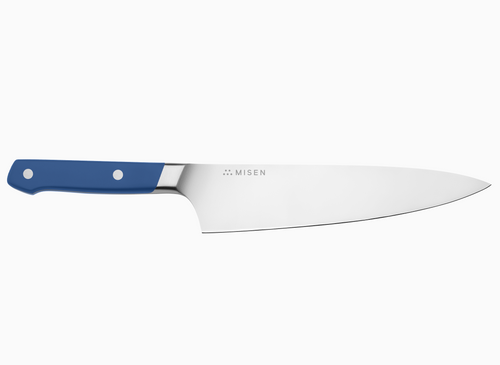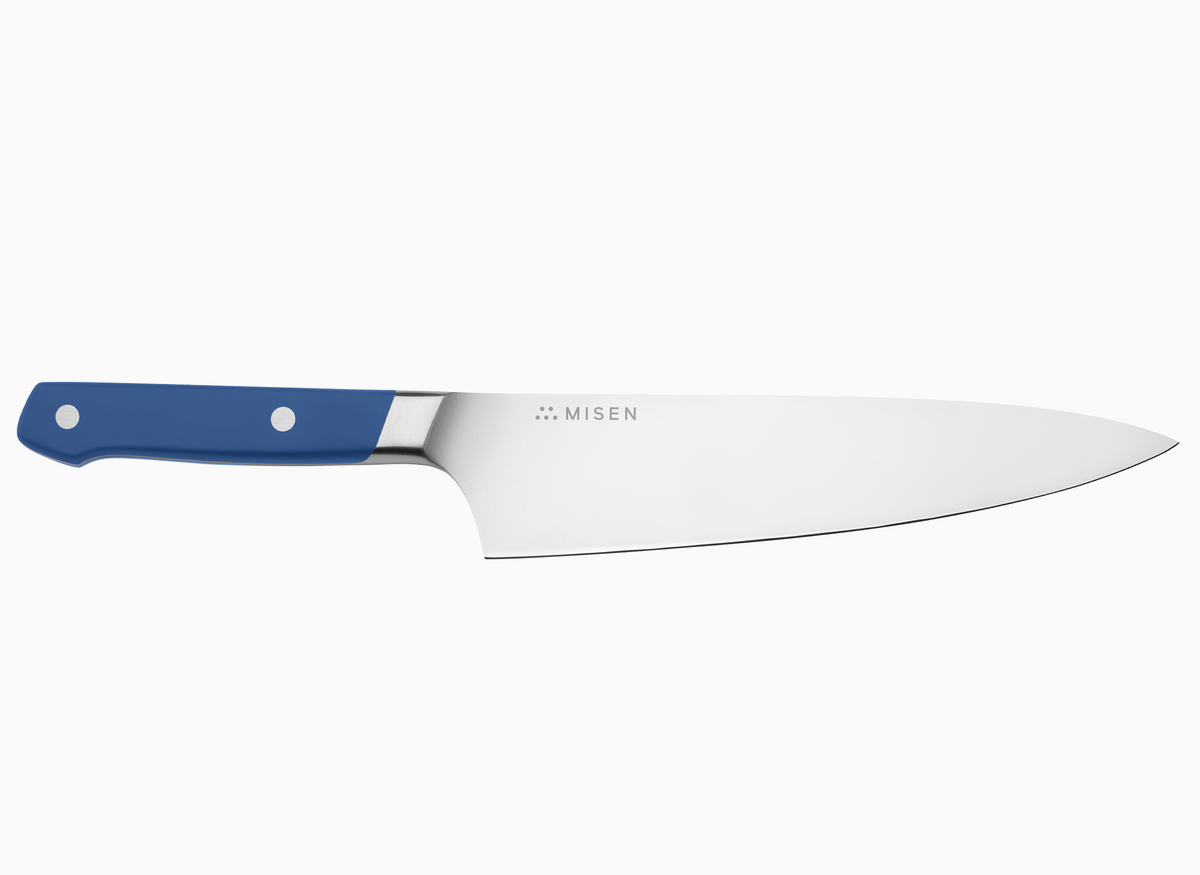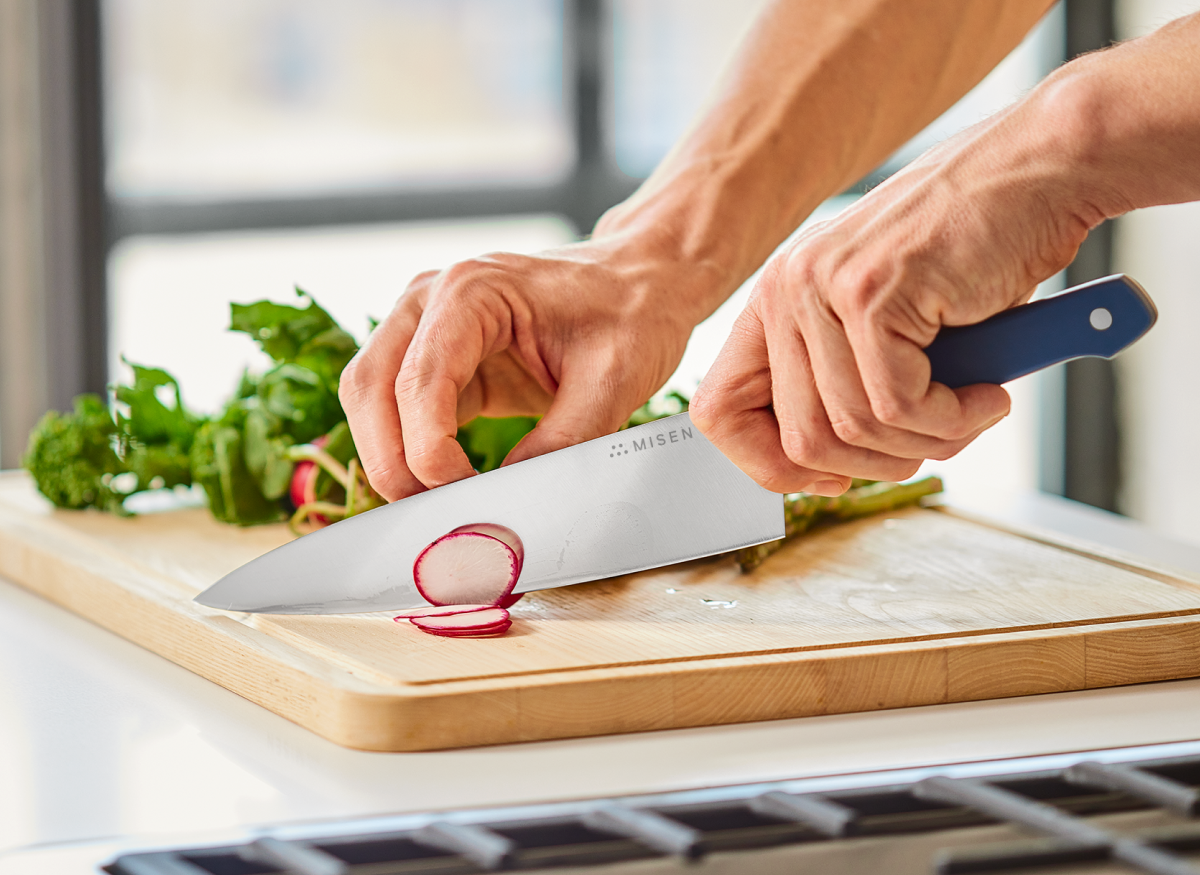What Is a Saucepan and What Is It For?
 Although some sizes are standard, saucepans can come in many sizes.
Although some sizes are standard, saucepans can come in many sizes.
- A saucepan is great for cooking anything involving liquid.
- Because of its unique shape, it comes with some drawbacks.
- These drawbacks can be avoided by opting for a saucier instead of a saucepan.
Among the pantheon of cookware, a saucepan has earned its rightful place as one of the most crucial pots and pans. Despite its name, it's versatile and generally irreplaceable: Every professional kitchen has them, and every home kitchen needs them too. The sauce pan is related to its similar but superior cousin, the saucier, and has a long and storied history in kitchens.
A saucepan can come in many varieties: stainless steel, cast iron, copper, nonstick, and many others. Regardless, the concept is the same: It's made for handling liquids of many types.
Follow along as we discuss what a saucepan is, as well as the best ways to use it.
Saucepan Shape
A saucepan has a distinct shape: It's deep with high sides and straight edges, and usually features a long handle and, quite often, a lid. Its surface area is generally small relative to its height, allowing heat to be evenly distributed through the liquid in the pan.
A saucepan is generally meant to be used on the stovetop. It can come in many sizes, though usually you'll see 2-3 quart saucepans. It's smaller than a stockpot or a dutch oven but is much deeper and usually less wide than a frying pan. It's also taller and narrower than a sauté pan.
A saucepan's height is one of its main selling points since it allows a high volume of liquid to be contained in a small area. Additionally, this height prevents the spillage of liquid that you would likely see in other pans. Boiling water in a skillet, for example, would be messy and potentially dangerous, especially if you intended to move it. A saucepan, however, avoids these problems due to its shape. If you're interested in some of our other popular pans, Kitchen Infinity wrote a thorough Misen pan review that covered our nonstick, stainless steel, and carbon steel pans.
Saucepan Uses
 A saucepan is perfect for boiling water.
A saucepan is perfect for boiling water.
A saucepan excels at cooking anything that's mostly liquid. This means it's great for stewing, simmering, making soups and, unsurprisingly, making sauces like pasta sauce. Because they usually fall in the 2-3 quart range, they're not ideal for making stocks or large quantities of things like soup or stew: That's what the larger stockpot is best for. However, for making smaller quantities, a saucepan is the perfect tool.
A very important task often designated to saucepans is boiling water for a small serving of pasta. It's also a good choice for things like mashed potatoes, risotto, lentils, or any other grain that requires boiling.
If it's oven-safe, a saucepan can also be used to braise in a pinch (although a saute pan is generally a superior choice for braising). And with its lid, a sauce pan can also function as a miniature Dutch oven. However, a saucepan with a non-stick coating shouldn't be placed in the oven at all.
Saucepan Drawbacks
 A saucepan’s straight edges can make stirring and scraping difficult.
A saucepan’s straight edges can make stirring and scraping difficult.
Although a saucepan is indeed a thoroughly useful cooking pan, it does come with its own drawbacks.
The first, as previously mentioned, is its limited size. Although this limited size means the pan is easier to move and work with, it also limits the amount of food that you can prepare in it. If you're having lots of people over for dinner and making pasta, for example, it's likely that even a 3-quart saucepan won't cut it, and you’ll need to reach for your stockpot instead.
Second, due to its shape, a saucepan requires frequent stirring and runs a constant risk of food burning and sticking — whether it's nonstick or not. This is because the corners at the bottom of a saucepan are generally straight, often near a 90-degree angle. If you're not using a cooking tool that can reach into the corners of the pan, you risk the food in that area burning or sticking. Even a small bit of burned food in a dish can ruin the flavor, so you'll want to be sure you're scraping the corners very thoroughly when cooking.
Third, and also due to its shape, a saucepan can be tough to clean. This is for the same reason mentioned above: Its sharp corners at the bottom. Any food stuck to the corners can be difficult to remove even with heavy scrubbing.
Although conventional wisdom would tell you to soak your pan to remove any gunk left in the corners, remember that metal doesn't like to be soaked. Even a stainless-steel saucepan needs to be treated with love and respect when it comes to water: It's best to avoid soaking it if at all possible.
What About a Saucier?
 A saucier is the more refined relative of the saucepan.
A saucier is the more refined relative of the saucepan.
As mentioned above, a saucier is similar to a saucepan, but — in our humble opinion — is far superior. Its superiority comes down again to its shape. Let’s take a look at the similarities and differences.
Similarities
Like a saucepan, a saucier is designed to handle liquids. It's generally shorter and wider, though it's still plenty tall enough to handle liquids without risking spillage. A saucier features a handle and a lid, just like a saucepan.
A saucier can be used to cook anything a saucepan can. This means you can cook pasta, reduce sauces, boil potatoes, make a stew, or braise, just as you would with a saucepan.
Differences
A saucier's biggest difference compared to a saucepan — which is far more important than it appears at first glance — is its rounded corners around the bottom. This leads to profound implications both when cooking and cleaning.
As mentioned above, the sharp edges and straight sides of a saucepan make it easy for food to get stuck or burned in those corners. This can lead to difficulty stirring and cleaning.
The rounded corners of a saucier make stirring a breeze. Using a whisk, for example, would work exceptionally well in a saucier since the rounded end of a whisk would match the rounded corners of a saucier. Try using that same whisk in a saucepan and you'll miss the corners. It may sound trivial, but on high heat, food can burn quickly.
In addition to cooking, the rounded corners of a saucier make it far simpler to clean. Not only will there be less food stuck to begin with, the corners will also be easier to reach and scrub. That means you won't need to soak your pan, which means it'll last longer in your care.
What to Look for in a Saucepan?
 You’ll want a saucepan or saucier that can take a punch in the kitchen.
You’ll want a saucepan or saucier that can take a punch in the kitchen.
Because a saucepan is often subjected to high heat, you'll want one that can take the heat without stress. Additionally, because saucepans are often used to cook acidic foods like tomato sauce or soup, you'll want a metal that's non-reactive. This makes stainless steel the way to go: Stainless steel can handle very high heat and is non-reactive. It ticks both of those boxes. Additionally, because stainless steel is dishwasher-safe, you'll be able to run it through countless washes without ruining the pan.
Get Saucy
Whether you choose to use a saucepan or our preferred saucier, you’ll enjoy its many uses and versatility. It can quickly become one of your most used kitchen tools, and allow you to make so many exciting dishes from custard to consommé. When choosing a saucepan, make sure to find something sturdy that can stand up to repeat use — and make sure to take care of it right. When you love your pans, they'll love you back.








